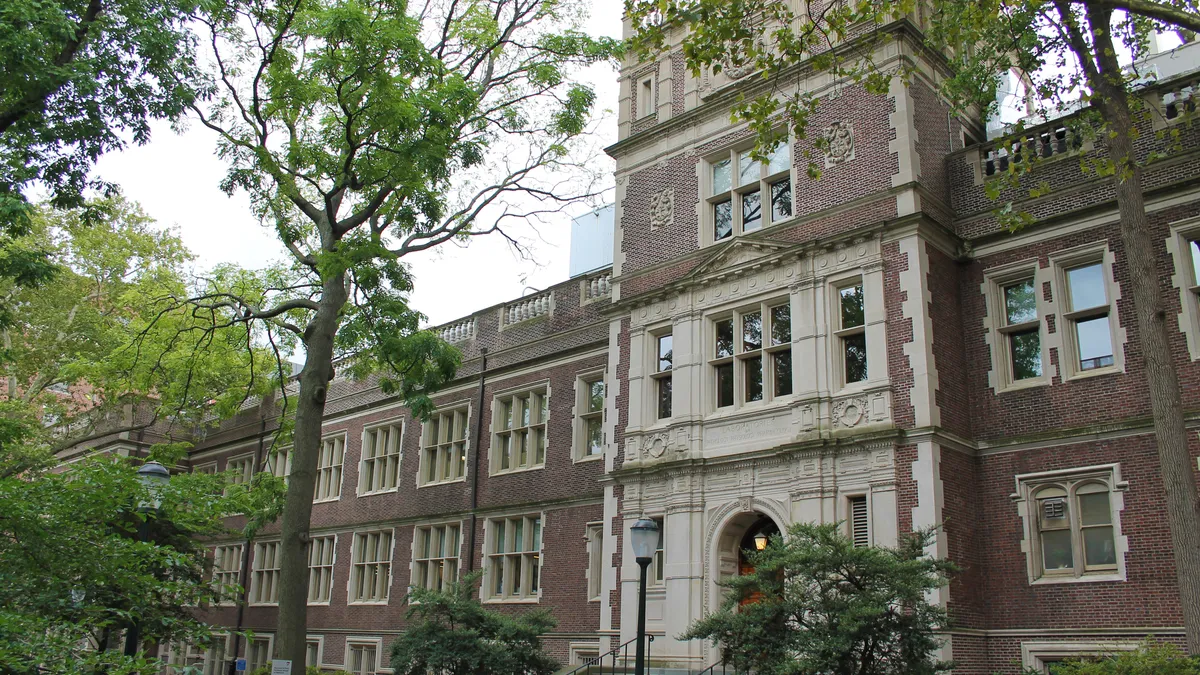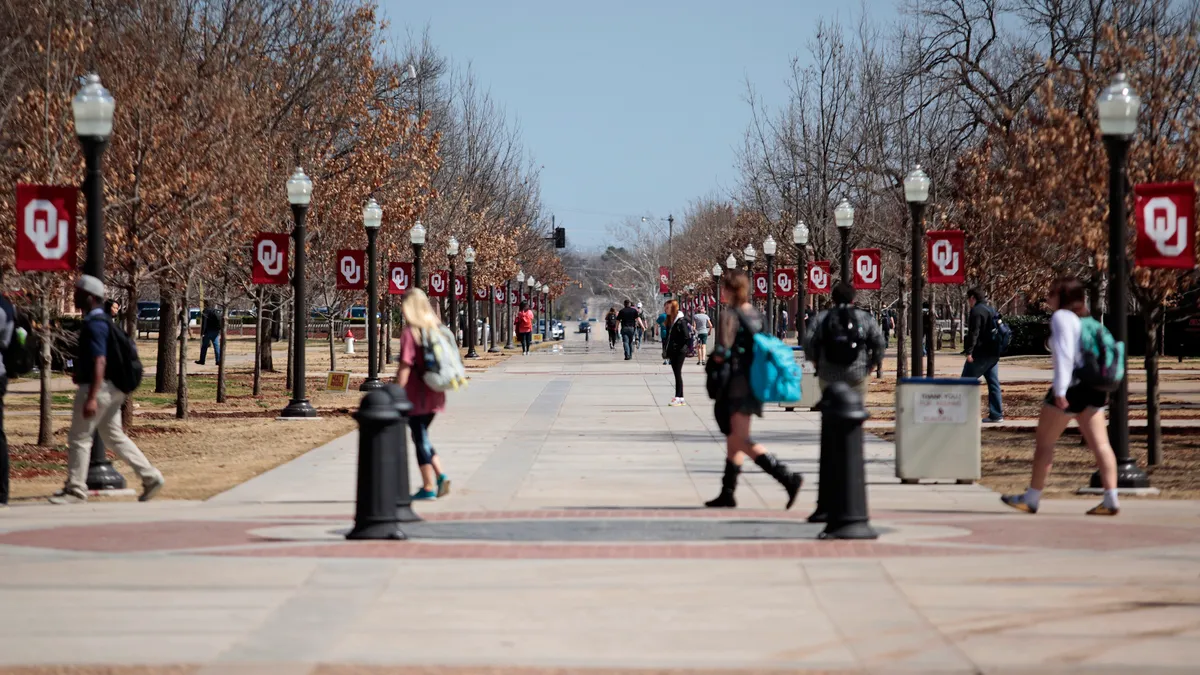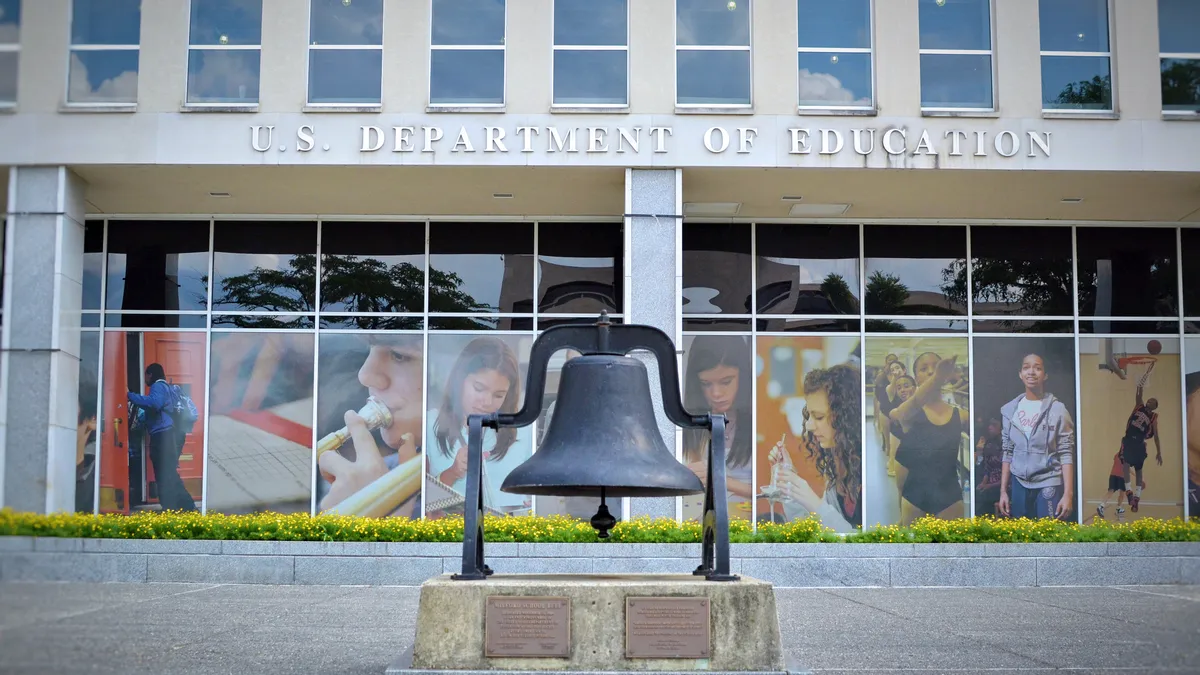Dive Brief:
- The number of colleges saying they still have space for incoming students rose slightly from May 1 to June 1, according to a list kept by the National Association for College Admission Counseling.
- Around 775 schools had space as of June 1, compared to 706 in May. The association says the fluctuation is typical, though the overall number of schools responding is much higher than in prior years. Last year, 419 colleges said they had space as of May 1.
- Many colleges extended their traditional deposit deadlines by a month or more to accommodate students whose plans are in flux because of the pandemic.
Dive Insight:
The list is designed to show which colleges have open seats, housing or aid after the traditional admissions deadline of May 1. Because schools extended that deadline, NACAC wasn't sure if more colleges than usual would join the list by June, its director of research, Melissa Clinedinst, said in an email.
"That hasn't materialized," she wrote, adding that schools with extended deadlines either were already on the list or had filled their classes.
This year's count caught attention for being nearly double last year's. (The list includes schools with rolling admissions, as well as a few dozen located outside the U.S.) The pandemic upended the spring recruitment season — when colleges try to secure commitments from admitted students. And it has caused staggering job losses that could put college out of financial reach for more students.
Meeting enrollment goals for the summer and/or fall terms was the top concern among college presidents surveyed by the American Council on Education in April and May, though the percentage saying so dropped slightly during that time. As officials weigh whether to reopen campuses or continue online instruction, some surveys show students and their families don't favor remote classes. Put off by the transition online this spring, several are suing colleges for tuition refunds.
Moody's predicts the sector could see a 2% to 4% increase in enrollment this fall because of high unemployment. But with students expected to attend lower-priced schools and perhaps need additional financial aid, net tuition and auxiliary revenue per student is expected to fall between 5% and 13% for the next fiscal year, analysts note.
An increasingly competitive recruitment environment compounds those factors, said Madeleine Rhyneer, vice president of consulting services and dean of enrollment management at consultancy EAB.
"The big shift last fall was schools that never had to be in a recruiting mode over the summer found themselves — and surprisingly — in that situation," she said. "The level of competition moved up the food chain."
In an open letter last fall, Bucknell University's vice president for enrollment management explained why the school fell short of its enrollment goals. Students' desire for lower tuition was a driving factor, he wrote, in addition to a drop-off in the number of high school graduates.
This year, a number of highly selective colleges turned to their waitlists before May 1, Rhyneer said.
If steeper competition wasn't enough, recent changes to NACAC's ethics code gave colleges the green light to recruit more aggressively. In September, it removed a provision that banned recruiting students who had already committed to another college. And in March, it recast the code to carry less weight. Experts agree these changes will heighten competition.
To fill their classes, Rhyneer advises colleges to continue to target recruitment efforts at students who have already committed to their school, as well as those who have been accepted but have yet to decide. "Those commitments can be kind of ephemeral, and most ... are made on the presupposition that schools will be face-to-face in the fall," she said.
Some schools are casting a wider net. Public colleges in New Jersey recently launched an initiative to draw students attending out-of-state schools. They are promising a simplified application process, access to financial aid and housing, and an opportunity to help the state recover from the pandemic.
As the program's website advertises: "[Y]ou will have all that at a cost of attendance that may be lower than out-of-state, a factor that may be important to you and your families at this difficult time."











